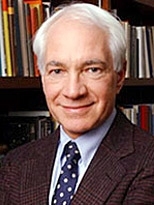The shift in party balance in the U.S. Congress may have created an unexpected roadblock to a long-awaited boost in government funding for the physical sciences, MIT experts said Dec. 13.
"Science Policy in the New U.S. Congress" featured speakers William Bonvillian, director of the MIT Washington Office; Claude Canizares, vice president for research; and Ernest Moniz, director of the MIT Energy Initiative. Kenneth Oye of the Center for International Studies was moderator.
During the transition, when control of Congress switches from a Republican to a Democratic majority, Bonvillian said, "representatives decided not to get stuck with appropriations bills and leave them for the incoming Democrats."
Appropriations are expected as part of the American Competitiveness Initiative (ACI), which promises to commit $5.9 billion--$1.3 billion in new federal funding and an additional $4.6 billion in R&D tax incentives--in fiscal year 2007 to increase investments in R&D, strengthen education and encourage entrepreneurship. But the party switch and the Bush administration's looming federal deficit may leave science spending in jeopardy.
Canizares argued that political party shifts will not make a big difference in spending for basic science because many areas of science are nonpartisan. "The interplay between a Democratic Congress and the political appointees running the agencies is going to be the interesting thing to watch," he said.
While national security worries drove up science funding during the Cold War and health care concerns made the National Institutes of Health budget skyrocket in the '90s, Bonvillian said--as MIT economist and Nobel laureate Robert Solow has shown--technology and innovation need to be the predominant forces behind economic growth.
"Growth economics is now understood to be the basis for innovation-led growth, and the European Union, China and India are following this model. But the U.S. political system has not absorbed these lessons yet, and university research will face continuing difficulty until we sort this thing out," Bonvillian said.
In addition, the predicted demographics of the coming decade do not paint a pretty picture for science research. As baby boomers age, Medicare costs will peak as a percentage of the gross domestic product, leaving science and other vulnerable domestic discretionary funding initiatives with the dregs.
The Medicare drain on federal dollars would make it unlikely the government could support proposals such as a new agency, modeled on the innovation-seeking Defense Advanced Research Products Agency (DARPA), to support energy research. E-ARPA, as it has been dubbed, would cost $1 billion a year.
The good news is that MIT has a lot of convincing arguments for federal dollars. Research on alternative energy strategies and conservation techniques that will make the United States less dependent on foreign oil will be attractive to the current and incoming administration, speakers said.
While the budget deficit "does have a serious impact … the 'innovation agenda' has become the latest buzzword and there has been a competition between the parties to capture that agenda," Moniz said.
Some support for energy R&D might come from a royalty on energy use, and there is increasing discussion of a carbon tax that would tax energy sources that emit carbon dioxide into the atmosphere and contribute to global warming.
"The fear, looking forward, is that one ends up with CO2 pricing mechanisms of some type, but because of political compromise, it is such a small amount that it does not motivate real technology shifts, but will be a way of claiming we are doing something," Moniz said.
The event was sponsored by the MIT chapter of Student Pugwash USA, which explores the implications of science and technology advancement on our everyday lives.
A version of this article appeared in MIT Tech Talk on December 20, 2006 (download PDF).







